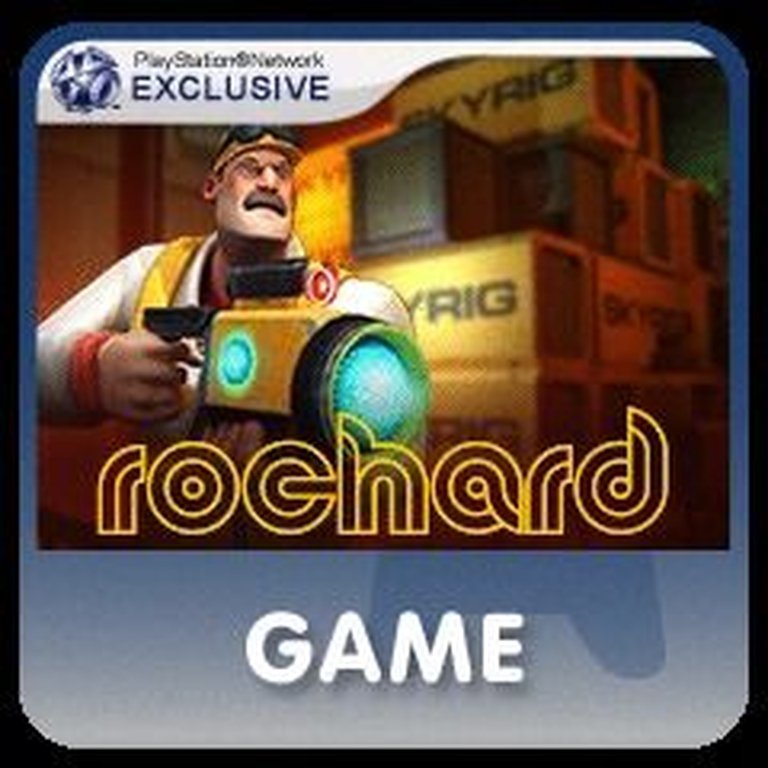- Release Year: 2011
- Platforms: Android, Linux, Macintosh, PlayStation 3, Windows
- Publisher: Nordic Games GmbH, Recoil Games, Ltd., Sony Online Entertainment Inc.
- Developer: Recoil Games, Ltd.
- Genre: Action
- Perspective: Side view
- Game Mode: Single-player
- Gameplay: Platform, Puzzle
- Setting: Futuristic, Sci-fi, Space station, Spaceship
- Average Score: 79/100

Description
Rochard is a side-scrolling science-fiction platformer where players take on the role of John Rochard, an astrominer searching for his missing crew through asteroids and space stations. Armed with a gravity-manipulating G-Lifter device, players solve physics-based puzzles and combat space pirates and security systems, upgrading the tool to function as both a gravity gun and a weapon capable of firing projectiles and grenades.
Gameplay Videos
Rochard Free Download
Rochard Cracks & Fixes
Rochard Reviews & Reception
metacritic.com (79/100): Original, well‑designed puzzles and entertaining humor.
metacritic.com (79/100): Fantastic puzzle platformer – a great surprise with solid controls.
ign.com : An excellent adventure in puzzle‑platforming.
ign.com : The game stands out as a comedic, physics‑based adventure.
Rochard: Review
Introduction
Rochard is a gravity-defying platformer that captivated players with its unique combination of physics-based puzzles and hectic shooter action. Released in 2011, it quickly became a cult favorite for its innovative gameplay, memorable characters, and atmospheric presentation. This review delves into the game’s rich history, mechanics, and lasting impact.
Development History & Context
Rochard was developed by Recoil Games using the Unity engine, making it one of the first PlayStation 3 games to utilize this technology. The creative team aimed to create a side-scrolling platformer that combined gravity manipulation with physics-based puzzle solving. The lead designer, Juhana Virtanen, spearheaded the development of the core gameplay mechanics centered around the G-Lifter device.
The developers faced the challenge of balancing puzzle complexity with action-oriented combat elements. Their solution was a game that alternates between brain-teasing gravity puzzles and fast-paced shootouts against space pirates and mechanized threats.
Technological constraints of the era meant optimizing the Unity engine for console performance without sacrificing visual quality. The result was a smooth 60 FPS experience with vibrant 2D visuals overlaid on 3D environments. This helped Rochard stand out in a market dominated by more traditional platformers.
Narrative & Thematic Deep Dive
The game’s story centers around John Rochard, a tough and witty astrominer who discovers an ancient alien temple while searching for valuable minerals. After his crew is captured by space pirates, he embarks on a rescue mission that unravel numinous forces at play.
Key characters include:
– John Rochard: The pot-bellied hero with a Southern accent, voiced by Jon St. John. His relatable persona and dry humor make him instantly likable.
– Skyler Hanson: John’s female companion, voiced by Lani Minella. Her technical expertise and loyalty drive the duo forward.
– Maximillian: The scheming antagonist who seeks the alien artifact for his own gain.
The plot weaves together elements of science fiction, adventure, and mystery. Themes that emerge include:
– Perseverance in the face of adversity: John’s journey from an ordinary miner to a galactic hero.
– The allure and danger of ancient alien technology: Maximillian’s greed versus the sacred nature of the Katsina statue.
– Companionship and trust: The bond between John and Skyler forms the emotional core of the story.
Gameplay Mechanics & Systems
Rochard’s gameplay revolves around the G-Lifter, a gravity-manipulating tool with multiple functions:
1. Gravity Manipulation: Switch between normal and low gravity to solve puzzles and traverse environments.
2. Object Interaction: Grab, lift, and throw objects to overcome obstacles and defeat enemies.
3. Combat: Upgrade the G-Lifter to fire projectiles and throw grenades.
4. Swinging Mechanics: Use the G-Lifter to swing from certain objects, enabling new paths.
Key mechanics include:
– Force Fields: Color-coded fields block different object types, requiring strategic planning.
– Fuses: Managing power by attaching/detaching fuses to activate systems.
– Health & Upgrades: Collect health pickups and upgrade the G-Lifter to gain new abilities.
The core gameplay loop involves:
1. Exploring environments and solving gravity-based physics puzzles.
2. Engaging in combat against waves of enemies using the G-Lifter’s various functions.
3. Collecting hidden items and health upgrades.
4. Progressing through chapters with escalating challenge.
World-Building, Art & Sound
Rochard’s visual style combines 2D sprites with 3D environments, creating richly detailed scenes. Key elements:
– Environments: Space stations, asteroid mines, alien temples, and a Native American-themed casino.
– Color Palette: Dark blues and purples for space environments against bright yellows and oranges for alien artifacts.
– Character Designs: Memorable characters like John’s beer-belly and the effeminate space police.
The soundtrack by Markus “Captain” Kaarlonen (Poets of the Fall) mixes Southern rock with 80’s electronic beats. The theme song “Grinder’s Blues” perfectly encapsulates the game’s mood.
Sound effects enhance the physics-based gameplay, with realistic gravity beam sounds and explosive impacts. Voice acting brings characters to life, especially Rochard’s Southern drawl and Skyler’s supportive dialogue.
Reception & Legacy
Rochard received generally favorable reviews, scoring 79% on Metacritic for both PS3 and PC. Praise centered around:
– Innovate gravity-based puzzles
– Compelling story and characters
– Atmospheric art and sound design
– Solid physics engine
– High replay value with collectibles and achievements
Some criticisms included:
– Occasional clumsiness in combat due to control schemes
– Not enough variety in enemy design
– Short playtime (~8 hours)
The game’s influence is seen in subsequent gravity-platformers. It won multiple awards including Best Gameplay and Best Graphics at Unity Awards 2011. Rochard’s legacy continues as a benchmark for indie game success using Unity.
Conclusion
Rochard stands as a testament to innovative game design and the power of independent development. Its unique blend of gravity manipulation, action, and adventure has left an indelible mark on the platformer genre. Despite minor flaws, the game’s strengths in gameplay, narrative, and presentation make it a must-play for fans of physics-based puzzles and sci-fi adventure.